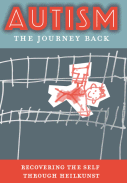

|
FREE Homeopathy at Home, Work and Play downloadable basic study course »  
|
|
Alternative Smallpox Strategies: A Newsmaker Interview

Medscape Medical News Dec. 19, 2002 - Editor's Note: In the wake of U.S. President Bush's newly released vaccination plan, the New England Journal of Medicine offered an accelerated online release of articles "to inform the current national debate about smallpox vaccination." Included in these articles, which will be published in the Jan. 30, 2003, issue, is a Sounding Board by Thomas Mack, MD, MPH, a professor of preventive medicine at the Keck School of Medicine, University of Southern California at Los Angeles. Although Dr. Mack is now a cancer epidemiologist, he was involved in observing and investigating the dynamics of smallpox transmission in Pakistan 30 years ago. Medscape's Laurie Barclay interviewed Dr. Mack to learn more about his recommendations for smallpox vaccination and containment strategies. Medscape: What is your opinion of the current smallpox vaccination plan? Dr. Mack: I agree that we should not have mass vaccination of the public, but I disagree that we should vaccinate half a million healthcare workers. The introduction of smallpox could occur anywhere within the U.S. - the likelihood that hospital workers would be the first to come in contact with the index case is not that great, so what is the rationale behind vaccinating large numbers of hospital workers? Vaccinating large numbers of staff identified by the hospitals as well as the general public is a mistake, because the deaths from vaccine complications will outweigh any limited increase in protection. Mass vaccination will guarantee a few deaths. If you vaccinate a million people, you will have three deaths from vaccine complications if those you vaccinate are healthy, more if they are immunosuppressed or chronically ill. And the liability for complications from vaccination is not clear... Dr. Mack: In the early stages of the disease, a terrorist won't be infectious. Before the rash appears, individuals with smallpox are not really infectious, even though virus can be cultured from the pharynx. The most infectious individuals are very sick and have a very obvious rash that is virtually impossible to miss. The most infectious period is during the second half of the first week of rash, when symptoms are so severe that the infected person is bedridden. So the likelihood of a bioterrorist wandering around and infecting others without being recognized as having smallpox is remote. Smallpox is not aerosolized easily, so saliva droplets containing the virus fall on the floor or on the clothes and basically stay there... Medscape: Isn't it commonly believed that the pilgrims infected Native Americans with smallpox by giving them infected blankets? Dr. Mack: That is absolutely untrue. However, it is true that there was a very rapid spread of smallpox through the Native American community. The reason for that is that the Native Americans had no concept of infectiousness. They were not frightened by someone covered in a rash and did not shun them the way we would today. Every doctor should recognize the characteristic appearance of smallpox, and once the first case appears, everyone will recognize it from the media coverage. No one's going to rush up and hug a highly infectious person covered in rash - they'll run the other way. Medscape: If we do have an outbreak, what is your recommendation for containment? Dr. Mack: ... The first case of smallpox will probably end up in a hospital. But the rest should not be admitted to a general hospital, assuming they are diagnosed before they enter the hospital. They should go to a dedicated facility or stay at home until [a dedicated facility] is available. There really is not much you can do for a smallpox patient other than symptomatic care. [except with homeopathic and homotonic remedies,of course!] Dr. Mack: Smallpox is contagious but it doesn't spread like wildfire. We have one to three weeks to isolate exposed individuals before they become contagious. If we follow this plan, the second wave of smallpox will develop under surveillance. Of course, the system wouldn't be completely efficient, but any case missed would be like a new importation, and surveillance of the contacts of that case would help prevent additional spread. Smallpox is a disease that lends itself to containment. Based on what we learned in Europe, an initial smallpox introduction will probably result in fewer than 20 cases and 10 deaths. Hopefully, with increased experience, each subsequent introduction would have less of an effect. The authorities and the media have done a terrible job of preparing the public because now they're scared to death, when in fact the disease is controllable and shouldn't create mass panic. In the European outbreak of smallpox after World War II, for every one case admitted to the hospital, there were about six hospital patients and visitors who became infected, about four hospital workers, about three household contacts, and only one individual where the route of transmission was unclear. Hospitals are where the danger is, not being out in public. Of about 1,000 individuals infected in the postwar European outbreak, not one was infected on a plane, train, or bus. So the notion that we're at risk from infected individuals traveling around is a mythical fright. N Engl J Med. 2002;348(5):000-000 Reviewed by Gary D. Vogin, MD [ Back to Articles ] [ Top of page ] |